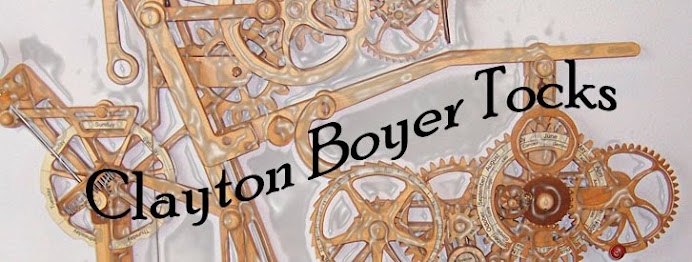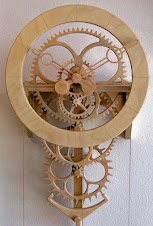 |
| Space Time Continuum by John Fast |
John Fast emails: "Hi Clayton,
I completed your Kinetic Sculpture design recently and thought you might be interested in seeing the results in these 10 photos. I followed your advice and constructed all the cogs, etc. from Baltic Birch ply. Except for the cogs, I veneered all the other parts to cover the ply layers. The main supports are of Purple Heart wood. I changed the design on the balance wheel a bit. I could not find any suitable marbles, so I made my own as well as the weights out of a piece of soapstone that I couldn't find any use for over the past 15 years. I also had to add the extra weight shown to keep it running. We don't have much humidity here in Winnipeg, Canada, so that isn't an issue for me. I'm really pleased with the result and while it may not be as perfect as your work, it looks great in our living room. Thanks for a great design.
Cheers, John Fast"
Note: Click on any of these pictures to enlarge:
Clayton answers: "Wow, John, you do magnificent work!
I hate to disagree with you, but your Space Time Continnum is way more perfect than mine! Yours is truly the art of a craftsman, and those soap stone counterbalances are beautiful art pieces in themselves. I'm glad you found a good home for them. I guess that's why they have been so patient for the last 15 years. They were just waiting for their place of signifigance in your sculpture.
Thanks for doing such a spectacular job on your Space Time Continuum. You have truly done that design proud.
Congratulations. Aloha. Clayton"













